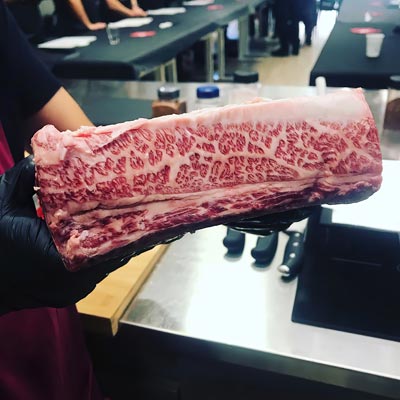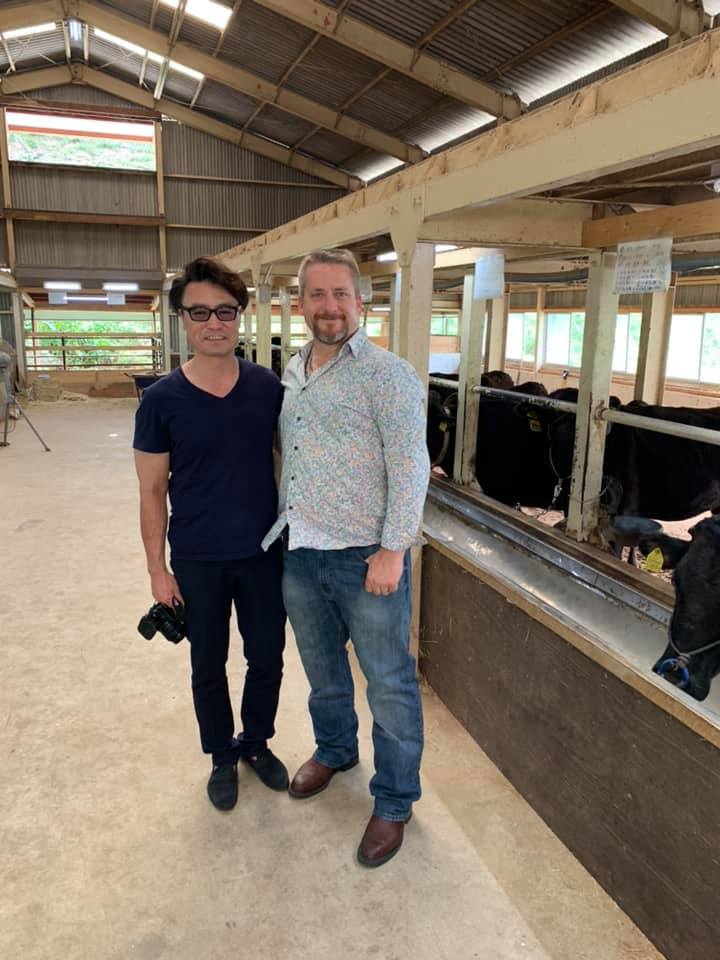Kobe
KOBE BEEF: THE MYTHS, THE FARMERS AND THE MEAT
By Kimio Osawa, Founder, Osawa Enterprises
Kobe beef is one of the best known Japanese wagyu beef brands but did you know that for over 150 years, the Japanese government imported many European breeds to try to improve meat quality and stimulate greater meat production.
It turned out to be a total failure, so after years of experimentation, they went searching for the origin of Japanese wagyu breeds. They traced the origins of Japanese Wagyu to a few places in Kobe, in the Hyogo prefecture.
One of the genetic lines was called the Tajiri line, which is now used in 99% of Japanese wagyu beef brands production. When wagyu farmers need to focus on highly marbled wagyu productions, they then cross-breed with the Tajima genetic lines.
The Tajima line is originally bred, born and fed in only Kobe. Characteristically it has a much smaller frame compared to other famous Japanese Wagyu brands. They are also a more difficult breed to rear. Kobe beef farmers need to pay extra attention to cattle as they are more delicate than and sensitive to change than most wagyu breeds.
Everybody expects Kobe beef to be one of the most highly marbled wagyu experiences, however, the meat is 40% A4 (a Beef Marbling Score of 6-7) and 40% A5 (BMS 8-9). It is quite difficult to achieve above BMS 10-12.
Buy your Kobe beef exclusively from Osawa Enterprises
I would say there is only 5% of whole Kobe beef industry that can achieve a BMS of 12. The biggest challenge for its production is the heavy in-line breeding. Most famous brands – especially Kagoshima, Miyazaki and Hokkaido – can cross-breed with any genetic line with a high marbling focus or fast growth line. That way they can easily achieve over 90% of their product with an A5 grade.
A closely protected formula
Kobe beef production is highly isolated, as they are committed to keeping the exclusivity of the genuine Tajima genetic line. The Kobe beef breeding organization carefully chooses and advises most of its farmers to maximize the limited genetic line for better marbling, better growth rate and to stay away from intensive in-line breeding.
The Kobe beef organization said to me that their target BMS is A4, and a BMS of 6-7. They said the balance of marbling and actual red meat is ideal and creates the best eating quality for consumers.
Here is some more information about the breed.
- Steers (castrated cattle) are around AD42 per kg for carcass weight (normally 430kg)
- Virgin cows (female cattle) are around AD50/kg for carcass weight (normally 350kg
Kobe beef sounds very expensive. But farmers are not making any money at the moment due to high feeder steer (calves) prices (virgin cows are AD11,000 and steers are AD12,500.)
Another biggest problem they are facing is Matuszaka beef production. Matsuzaka wagyu farmers buy all virgin cows from the market for their fattening production.
There are two brands for Matsuzaka beef. The most famous brand is Tokusen Matsuzaka which is strictly Tajima virgin cows and fed for a much longer period of time compared with most of wagyu production. And the other brand is normal Matsuzaka beef. Scarcity of virgin cow Kobe beef production is a growing concern for future production. It is going to be an even more highly prized beef in Japan and worldwide.
Kobe beef has much finer texture due to small frame and much finer marbling. As you know, wagyu beef fat is a good fat and full of unsaturated fatty acid. Kobe beef contains higher fatty acids which give it a better sweet aroma from fat and marbling. This finer balance of marbling and actual meat give Kobe a lighter taste and removes the heavy after-taste.
Buy your Kobe beef exclusively from Osawa Enterprises
That’s why consumers don’t feel bloated from too much fat consumption. This sometimes affects other major Japanese A5 brands.
Kobe beef production is limited.
There are 1,000 tiny breeding farmers and 100 fattening farmers in Kobe beef region in Hyogo prefecture. The whole Kobe beef production is slightly growing but many of the small breeding farmers close down every year.
Kobe breeding farmers live in isolated, mountainous areas or small residential areas. It’s hard to find the production areas – they are too isolated.
I recently visited and asked all the leading Kobe beef farmers about their practices. None of them said they were feeding the stock beer, giving massages or playing the cattle classical music (these are the big myths).
All of them treat their cattle like pets or part of their family. They spend a lot of time making their cattle comfortable and clean. They all said they provide a better environment and less stress for cattle as it is a far more important factor for better beef production. I believe most of the feedlotters can’t copy small beef production for better cattle health conditions outside of Japan.
The farmers are full of pride for what they do. They see Kobe Beef as a Japanese treasure.
Is Kobe beef worth trying? I believe so. These days, most businesses are heavily focussed on fast production and profitability. There aren’t many farmers who are focused on an old-fashioned style of farming and taste. Kobe beef is, in reality, the origin of Japanese wagyu beef.





